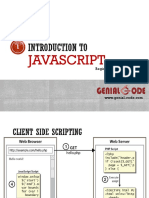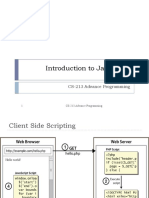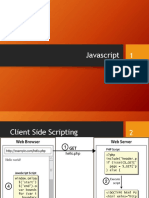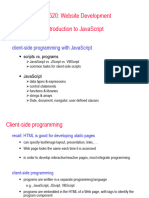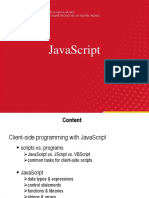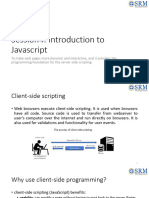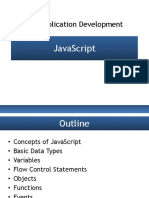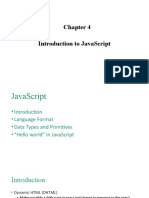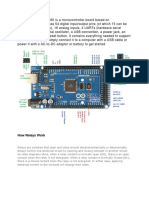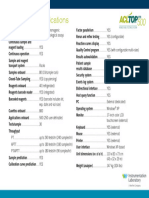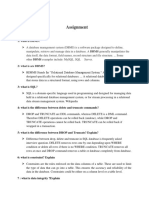0% found this document useful (0 votes)
16K views32 pagesJavascript
This document provides an introduction to JavaScript and client-side programming. It discusses why JavaScript is used in addition to server-side languages like PHP. JavaScript allows for dynamic and interactive web pages by modifying pages without posting back to the server. It is event-driven and can respond to user actions. The document then covers JavaScript syntax including variables, data types, operators, control flow statements, and arrays. It also discusses how to access and modify elements of an HTML document using the Document Object Model.
Uploaded by
Himanahu ChoudharyCopyright
© © All Rights Reserved
We take content rights seriously. If you suspect this is your content, claim it here.
Available Formats
Download as PPTX, PDF, TXT or read online on Scribd
0% found this document useful (0 votes)
16K views32 pagesJavascript
This document provides an introduction to JavaScript and client-side programming. It discusses why JavaScript is used in addition to server-side languages like PHP. JavaScript allows for dynamic and interactive web pages by modifying pages without posting back to the server. It is event-driven and can respond to user actions. The document then covers JavaScript syntax including variables, data types, operators, control flow statements, and arrays. It also discusses how to access and modify elements of an HTML document using the Document Object Model.
Uploaded by
Himanahu ChoudharyCopyright
© © All Rights Reserved
We take content rights seriously. If you suspect this is your content, claim it here.
Available Formats
Download as PPTX, PDF, TXT or read online on Scribd
/ 32





